Celebrate summer with some of New Brunswick’s native plants
Summer is in full bloom as New Brunswickers celebrate their provincial holiday on the first Monday of August.
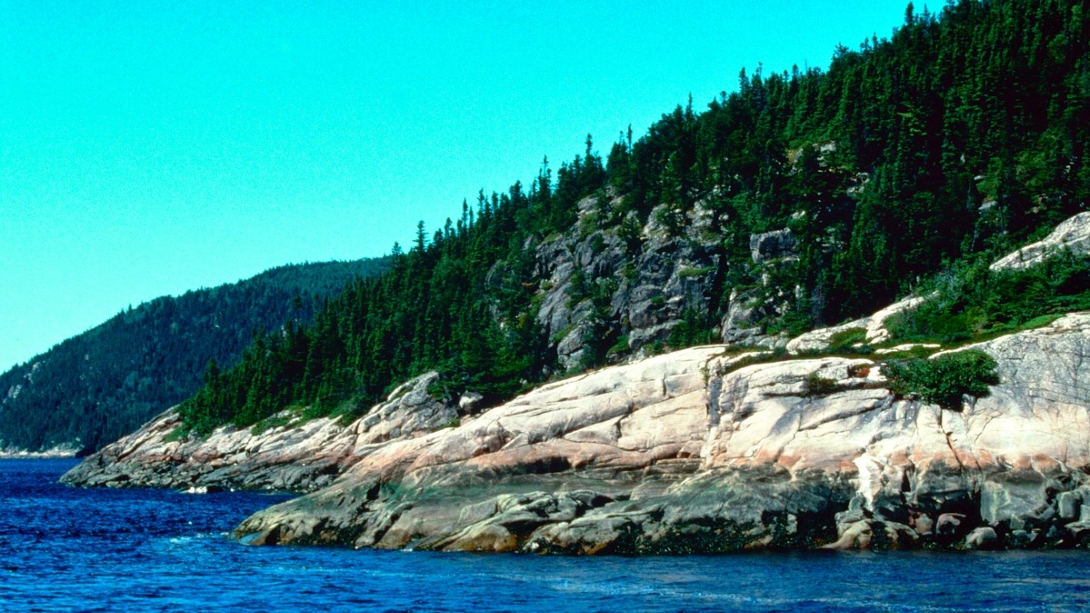
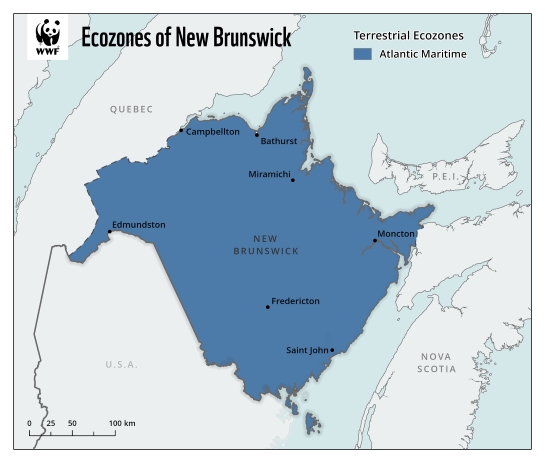
When it comes to nature, the province has a lot to celebrate with its ocean shores, high tides, dense forests and rolling hills characteristic of the Atlantic Maritime ecozone. Crossed by the Appalachian Mountains and by many rivers flowing to the Gulf of Saint Lawrence and the Bay of Fundy, New Brunswick is full of wildlife like bobcats, Canada lynx, black bear, moose and white-tailed deer benefiting from the shelter and nutrition provided by the region’s abundant plants and trees.
Of course, the effects of urbanization and climate change are as evident in New Brunswick as other parts of Canada, but residents can help regenerate nature by growing some of the province’s native tree and plant species in their own yards, balconies and shared community spaces.
Take a moment to explore the loveliness and usefulness of some of these plants and how you can help them, and wildlife, thrive.
Marsh Blue Violet — New Brunswick’s Provincial Flower
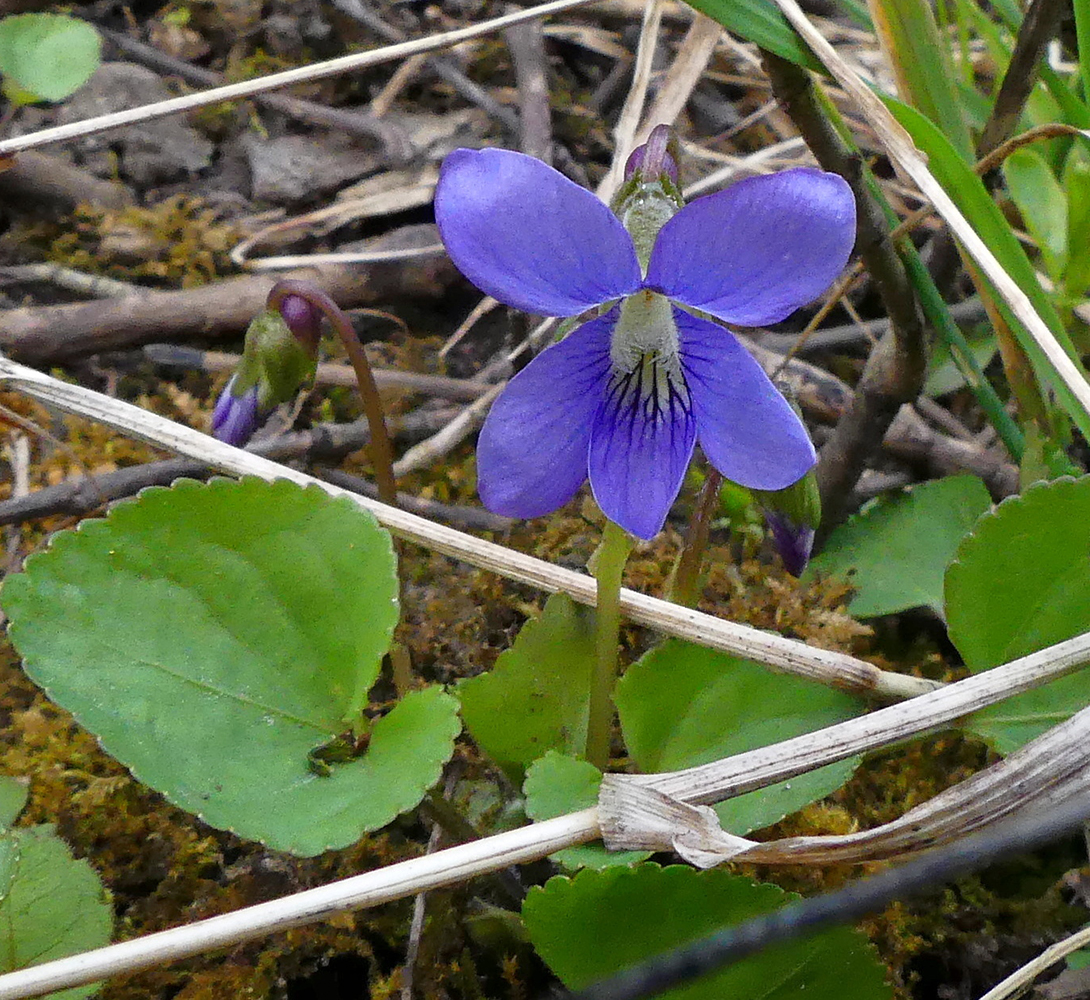
Part of the province’s coat of arms, the marsh blue violet (Viola cucullata) is a member of the violet family (Violaceae) and has many similar-looking cousins, like pansies.
This species produces delicate light purple-blue flowers in the spring and early summer and its rich green leaves are kidney-shaped.
The marsh blue violet is a “stemless” violet meaning that the flowers and leaves come out of the ground from a horizontal, underground stalk. Unlike “leafy-stemmed violets,” the stemless marsh blue violet’s flower stalks have no leaves on them.
Growing tips
As its name suggests, this flower thrives in wet conditions: in marshes, swamps and near streams and ponds. They’re easy to grow and can also make themselves at home pollinator gardens, rain gardens and container gardens in sunny or partly shady areas and in a range of soil types. Their native range extends across the southern parts of eastern Canada and down into the southern United States.
Benefits for wildlife
Butterflies, bees and other pollinators enjoy nectar from the flowers. Once they’ve had their fill, you can use the violet blooms in jams and syrups or even candy them — both leaves and flowers of the marsh blue violet are edible and high in vitamins A and C. Try growing some to use in teas and salads or for decorating cakes.
Balsam Fir — New Brunswick’s Provincial Tree
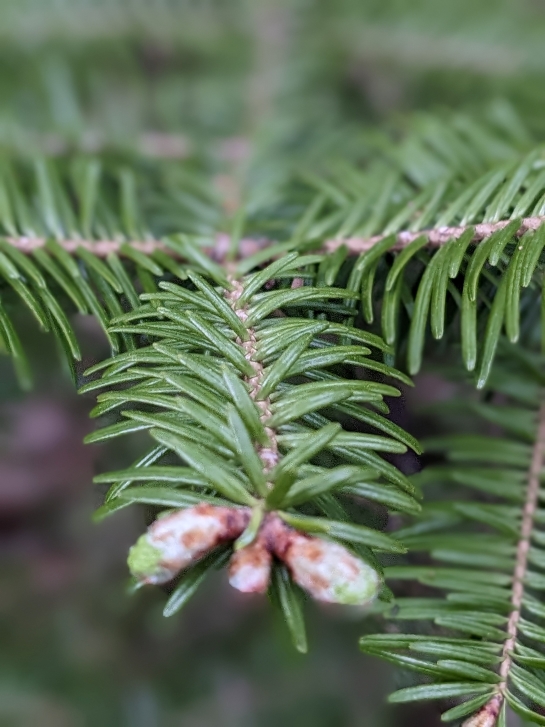
The balsam fir (Abies balsamea) is a small to medium evergreen, coniferous (seed cone-producing) tree. With soft, short needles and a cone-shaped profile, they are commonly used as Christmas trees. This fir is native to eastern and central Canada and the northeastern United States.
Balsam firs can grow over 20 metres tall. Their dense branches are covered with dark green leaves (needles) and their bark is greyish-brown.
In New Brunswick, balsam fir is a staple of the lumber industry and used for making high-quality paper. Other uses include Indigenous traditional medicine, food, varnish, sealant and more.
Growing tips
The balsam fir is winter-hardy, surviving temperatures as low as -45 C and can grow in a variety of terrains, from swamps to slopes to mountain tops.
Early spring or fall are the best times to plant a balsam fir. Soak and hydrate the roots before and after planting as water often to help the tree establish its roots in the new location. In good conditions, these trees can grow up to half a metre every year.
Benefits for wildlife
This tree provides food and shelter for many of New Brunswick’s native wildlife species. The foliage feeds caterpillars, grouse and large and small mammals, from moose to red squirrels, while the seeds nourish small mammals like squirrels and mice as well as birds like the black-capped chickadee, the province’s official bird.
Shore up a Shore with a Shrub – Common Elderberry
The common elderberry (Sambucus canadensis) is native not just to New Brunswick, but to a large area of the Americas, from east of the Rocky Mountains to as far south as Bolivia. This flood-resistant shrub can be bushy, with many stems and lovely bright green leaves with saw-tooth edges. In spring and summer, they produce clusters of delicate white flowers while dark purple to black berries follow in late summer to fall.
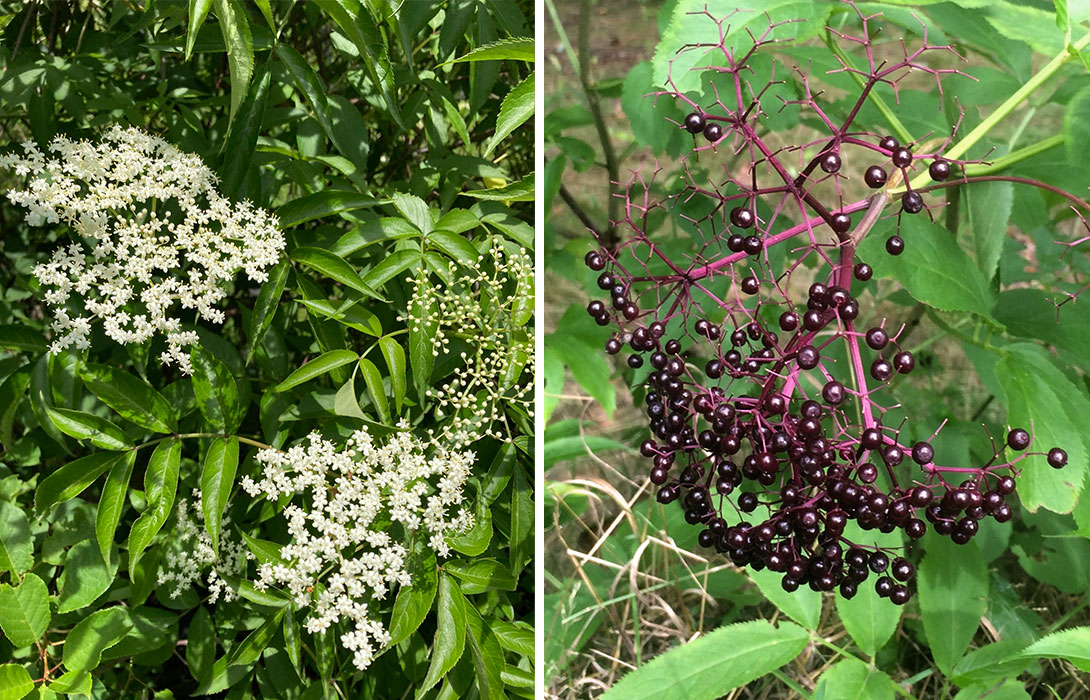
Growing tips
In their native habitat, elderberry prefers damp areas along streams and roadsides. However, when it comes to growing them yourself, they’re not fussy; they can thrive in full sun but also tolerate shade and stand up to windy conditions, flooding and poor soil quality. Planting elderberry not only helps to restore habitat and support wildlife, but this plant also makes an attractive landscaping element. Shrubs such as elderberry can help prevent erosion, which can be useful if you happen to have a stream or shoreline on your property. Learn more about preventing erosion with native shrubs here.
Benefits for wildlife
Common elderberry flowers support butterflies and moths, including North America’s largest moth, the cecropia moth. Birds and mammals enjoy the berries.
Help restore native plant life in New Brunswick and across Canada
By growing native plants in your yard, container garden or community space, you can help restore wildlife habitats — in New Brunswick or wherever you live in Canada. You can learn more about growing native plants, trees and shrubs and track your impact for nature by joining re:grow, WWF-Canada’s how-to hub to support the growing native plant movement.


